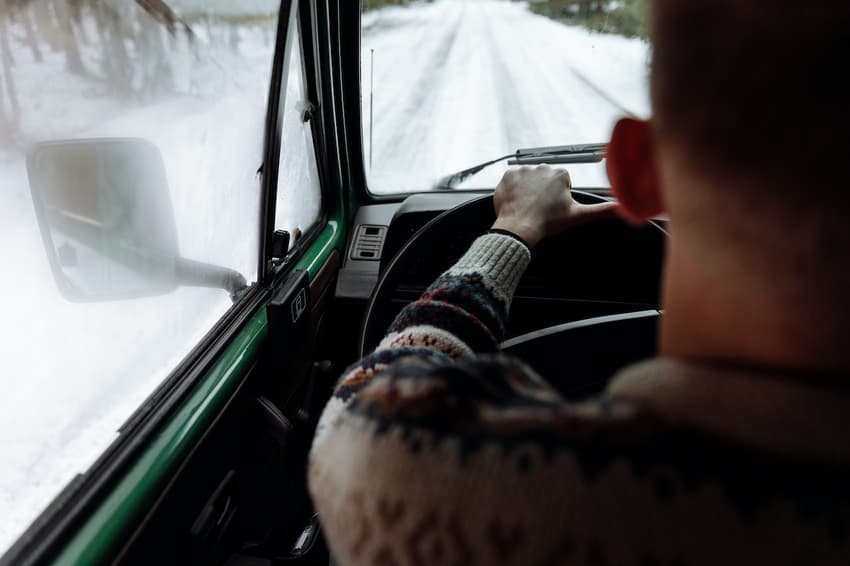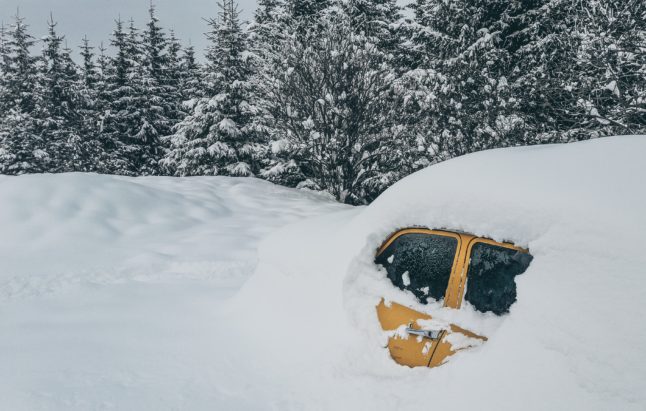Everything you need to know about driving in Austria in winter

Austria is known for having long, cold winters, which can impact conditions on the roads. Here’s what you need to know about driving in Austria in the winter. From tips to make your trip smoother to the rules you need to follow.
Austria’s infrastructure is built for winter weather. As soon as the temperature starts to drop overnight, gritting trucks are out in force, and roads are quickly cleared of snow during winter storms.
This makes driving in Austria during the winter months so much easier, but there are a few rules to follow as well.
Here’s everything you need to know about driving in Austria in the winter.
FOR MEMBERS: Reader question: Can I take the Austrian driving licence test in English?
Winter tyres
In Austria, all cars and lorries weighing up to 3.5 tonnes must be fitted with winter tyres from November 1 to April 15 of the following year. This is to ensure drivers are prepared for wintry conditions on the roads, such as snow and ice.
A driver can be fined €35 if caught driving without winter tyres during this time. If other road users are put in danger as a result, the fine can be up to €5,000.
The law also has consequences for insurance claims in the event of an accident while driving in the winter with summer tyres. For example, if there is a crash but the driver claims it wasn’t their fault, they have to prove that the accident would have still happened even with winter tyres to avoid blame. They then have the so-called “burden of proof”.
Also, a tyre only qualifies as an official winter tyre (or all-season tyre) if it has one of the following labels: M+S, M.S., M&S or the snowflake symbol.
READ ALSO: Can I use my foreign driving licence in Austria?
Snow chains and spike tyres
Between November 1 and April 15, all lorries (with a maximum weight of more than 3.5 tonnes) and all buses must carry snow chains for at least two wheels.
But the snow chains should only be used when absolutely necessary. Such as when a road is covered with snow or ice.
The use of studded tyres is illegal in Austria during the months of June, July, August and September. And if you want to use them in the winter, you need to display a studded tyre sticker (Spikeaufkleber) in the rear of the vehicle.
Spike tyres are only typically fitted on industrial or agricultural vehicles, and are not often used on Austrian roads as they can damage the surface.
Removal of snow and ice from the car
In Austria, drivers are required to clear all windows of snow and ice before driving. In fact, only clearing a small “viewing window” is illegal and can impact an insurance claim if there is an accident.
Drivers also have to clear snow from the lights and licence plate, including on a trailer. And it’s recommended to remove snow or ice from the top of a car as it can fall across the windshield while driving.
READ MORE: The story of how half of Austria drove on the left and half on the right – for 20 years

Photo by Andreea Popa on Unsplash
Road gritting and snow clearing
Municipal governments are responsible for gritting and clearing snow on public roads.
The system in Austria works well with gritting trucks regularly maintaining roads throughout the winter. As a result, roads are rarely blocked due to snow or ice in residential areas or on main roads.
However, owners of property also have to chip in and are required to clear snow from pavements and footpaths within 3 metres of their property. If there are no footpaths, then the road must be cleared and gritted within one metre of the property.
Weather forecasts
When driving during the winter months in Austria it’s always a good idea to check the weather forecast in advance – especially if setting out on a long trip.
If heavy snow or extremely cold temperatures are predicted then try to postpone the journey, if possible. But if you have to drive, pack a few essentials in case there are delays.
Must-have items include drinking water, a flask of tea/coffee, a shovel for clearing snow, a warm coat, gloves, a torch and a mobile phone.
Winter weather can vary between regions in Austria, particularly in the Alps. But a little bit of planning can make a big difference to your journey.
Useful links
Comments
See Also
Austria’s infrastructure is built for winter weather. As soon as the temperature starts to drop overnight, gritting trucks are out in force, and roads are quickly cleared of snow during winter storms.
This makes driving in Austria during the winter months so much easier, but there are a few rules to follow as well.
Here’s everything you need to know about driving in Austria in the winter.
FOR MEMBERS: Reader question: Can I take the Austrian driving licence test in English?
Winter tyres
In Austria, all cars and lorries weighing up to 3.5 tonnes must be fitted with winter tyres from November 1 to April 15 of the following year. This is to ensure drivers are prepared for wintry conditions on the roads, such as snow and ice.
A driver can be fined €35 if caught driving without winter tyres during this time. If other road users are put in danger as a result, the fine can be up to €5,000.
The law also has consequences for insurance claims in the event of an accident while driving in the winter with summer tyres. For example, if there is a crash but the driver claims it wasn’t their fault, they have to prove that the accident would have still happened even with winter tyres to avoid blame. They then have the so-called “burden of proof”.
Also, a tyre only qualifies as an official winter tyre (or all-season tyre) if it has one of the following labels: M+S, M.S., M&S or the snowflake symbol.
READ ALSO: Can I use my foreign driving licence in Austria?
Snow chains and spike tyres
Between November 1 and April 15, all lorries (with a maximum weight of more than 3.5 tonnes) and all buses must carry snow chains for at least two wheels.
But the snow chains should only be used when absolutely necessary. Such as when a road is covered with snow or ice.
The use of studded tyres is illegal in Austria during the months of June, July, August and September. And if you want to use them in the winter, you need to display a studded tyre sticker (Spikeaufkleber) in the rear of the vehicle.
Spike tyres are only typically fitted on industrial or agricultural vehicles, and are not often used on Austrian roads as they can damage the surface.
Removal of snow and ice from the car
In Austria, drivers are required to clear all windows of snow and ice before driving. In fact, only clearing a small “viewing window” is illegal and can impact an insurance claim if there is an accident.
Drivers also have to clear snow from the lights and licence plate, including on a trailer. And it’s recommended to remove snow or ice from the top of a car as it can fall across the windshield while driving.
READ MORE: The story of how half of Austria drove on the left and half on the right – for 20 years

Road gritting and snow clearing
Municipal governments are responsible for gritting and clearing snow on public roads.
The system in Austria works well with gritting trucks regularly maintaining roads throughout the winter. As a result, roads are rarely blocked due to snow or ice in residential areas or on main roads.
However, owners of property also have to chip in and are required to clear snow from pavements and footpaths within 3 metres of their property. If there are no footpaths, then the road must be cleared and gritted within one metre of the property.
Weather forecasts
When driving during the winter months in Austria it’s always a good idea to check the weather forecast in advance – especially if setting out on a long trip.
If heavy snow or extremely cold temperatures are predicted then try to postpone the journey, if possible. But if you have to drive, pack a few essentials in case there are delays.
Must-have items include drinking water, a flask of tea/coffee, a shovel for clearing snow, a warm coat, gloves, a torch and a mobile phone.
Winter weather can vary between regions in Austria, particularly in the Alps. But a little bit of planning can make a big difference to your journey.
Useful links
Join the conversation in our comments section below. Share your own views and experience and if you have a question or suggestion for our journalists then email us at [email protected].
Please keep comments civil, constructive and on topic – and make sure to read our terms of use before getting involved.
Please log in here to leave a comment.